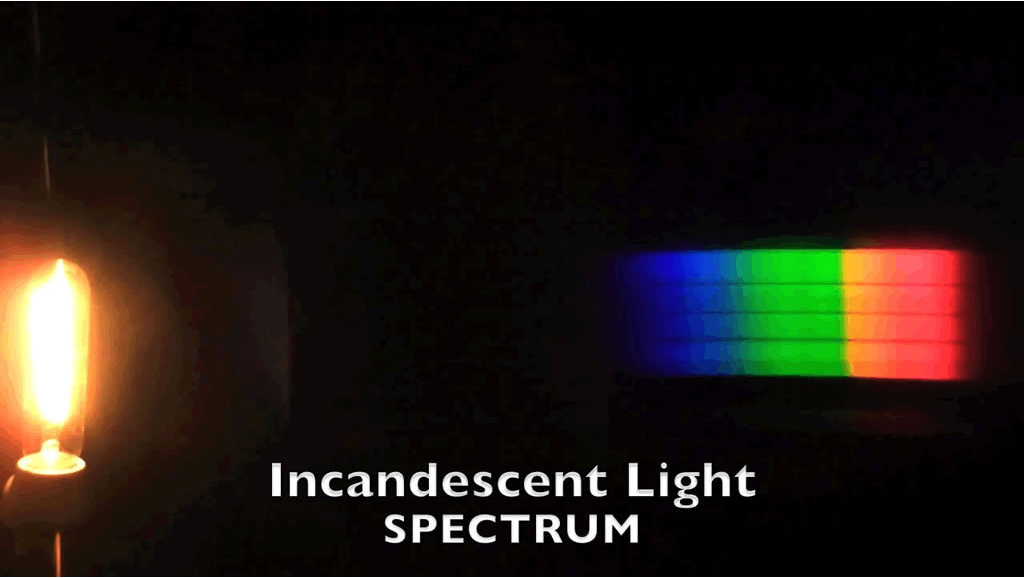Diffraction Gratings
Using filters is one way of separating light into its individual colors. Another way of separating light into its component colors is using a “diffraction grating.” Window D in your color analyzer is not just a clear window, it is a piece of plastic with thousands of parallel grooves called a diffraction grating. When light goes through the grooves, it splits into different parts, so we can see what makes up the original light. Look directly at this light in the center through Window D, holding it very close to your eye.
Gradually turn on the variable white light in the center. Demonstrate how to look through the diffraction grating. Then, check that everyone’s face is directly illuminated by the light from the bulb.
VISUAL (alternative movie): Spectra
Alternatively, fade on and immediately play a video clip of looking at spectra of an incandescent bulb. Pause and fade off the video immediately after the incandescent spectrum. Allow time for discussion if needed. The remainder of the video looks at spectra from various elements, which is used in the next section of the script, “What Stars Are Made Of.” Fade on and play the video with modular sections as needed in the next section of the script. May be used instead of a live demonstration.
What do you see?
[A straight rainbow.]
VISUAL 6 (still): Incandescent Spectrum. To be used in conjunction with the live demonstration of viewing spectra. Fade on a still of the spectrum of an incandescent light.

Besides the white light in the center you can see rainbows when you look to the left and right of the bulb. Rotate your color analyzers until the rainbows appear to the sides.
Let’s name all the colors we can see through the diffraction grating starting from the one furthest from the light.
[Red, orange, yellow, green, blue and purple or violet; have the whole class say the colors.]
Those are the colors that make up this white light. The diffraction grating allows us to see that white light is a combination of many colors: red, orange, yellow, green, blue and violet. But these are just the colors we can see. There are lots of other colors we cannot see; for instance, there is one before the red, called “infrared,” and there is one after the violet called “ultraviolet.” The areas before the red and after the violet look dark to us even though the invisible colors are there.

